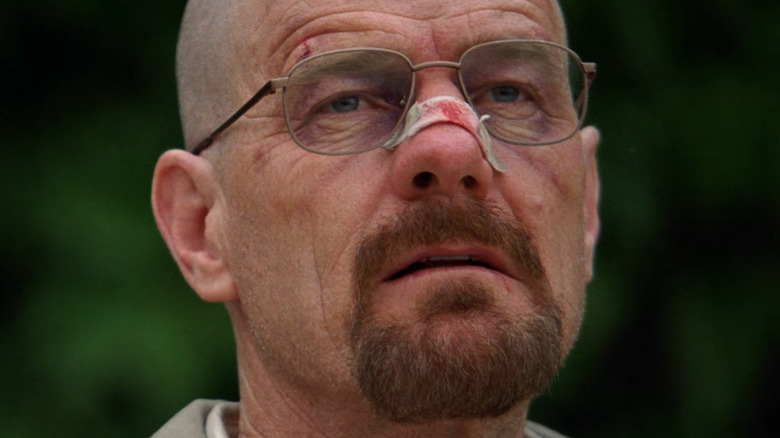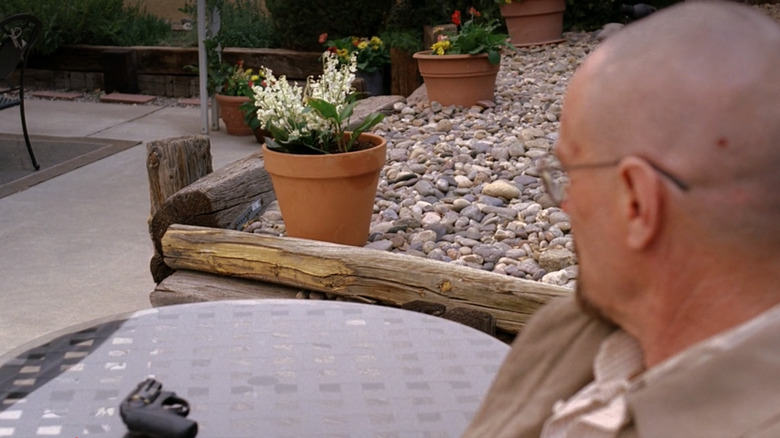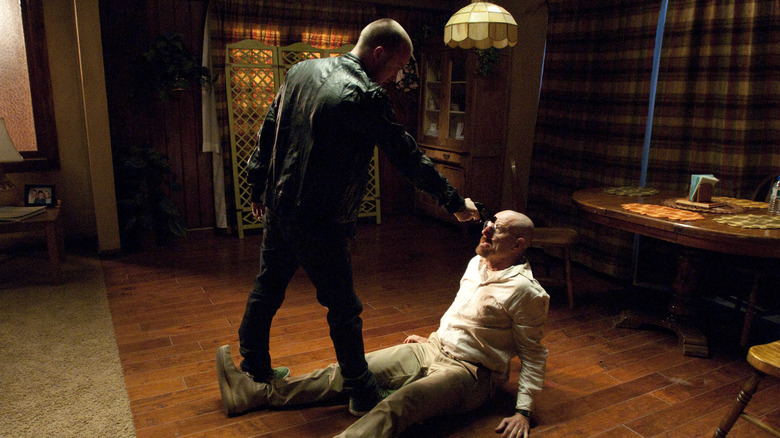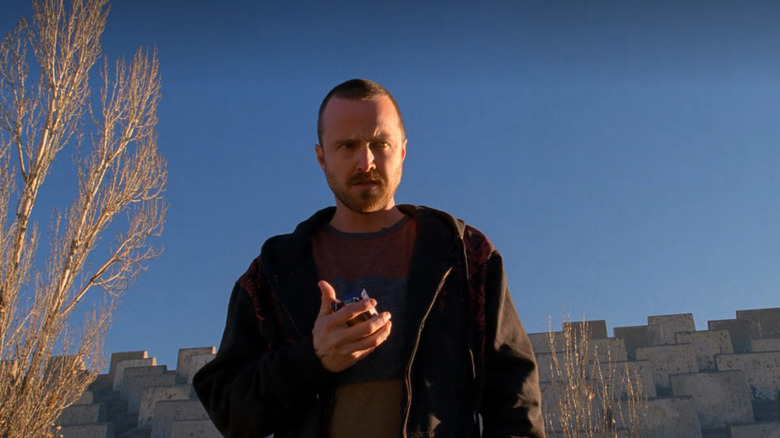Breaking Bad: How Lily Of The Valley Was Used To Poison Brock
Played by Bryan Cranston, Walter White begins as a high school chemistry teacher with a recent cancer diagnosis and ends up the drug kingpin Heisenberg. Once a promising mind, White was forced out of the business he helped create and secretly despises his station. When he enters the drug game, he quickly reveals how capable he is of relinquishing morals in pursuit of power. But among Walt's many evil deeds, it's difficult to think of one more reprehensible than his poisoning of Brock Cantillo (Ian Posada).
Throughout the series, White commits numerous acts of evil to maintain his empire. Although his first murder — a low-level drug trafficker — rattles him, White soon overcomes his distaste for violence. It's true that many of White's crimes, even the killings, can be justified in context. But White proved he's not above harming innocents. For many fans, Heisenberg's most heinous crime was poisoning Brock, the child of Jesse Pinkman's (Aaron Paul) romantic interest, using a plant called lily of the valley. Not only is Brock a child, and not only does he nearly die, but White poisons him to manipulate Jesse.
Brock's poisoning is a subtle plotline throughout the fourth and fifth seasons of "Breaking Bad," and viewers are expected to pick up on the details through subtext. So, if viewers missed it, here's exactly how everything went down.
What is lily of the valley and why was it used on Breaking Bad?
The convallaria majalis, a flowering perennial herb with white petals commonly known as lily of the valley, is not native to the New Mexico setting of "Breaking Bad" but grows heartily in the semiarid climate there, decorating gardens in a carpet of vegetation and creeping along sidewalks. However, as noted in the scientific journal Essential Emergency Medicine, every part of the plant also contains digitalis glycosides, distant cousins of cyanide, rendering it toxic if ingested. Skipping over medical terminology, the salient fact is that those toxins absorb into the bloodstream through the GI tract within minutes of ingestion.
As it relates to Brock's poisoning in "Breaking Bad," Walter White's use of the lily of the valley reveals his conniving wit and highlights some of the show's most prominent themes. In choosing the lily of the valley to poison Brock, Walt is counting on the fact that it's a typical New Mexico plant to deflect any suspicions Jesse might have since Brock could easily have found the plant on his own. Additionally, the lily of the valley is an interesting choice of poison from a thematic perspective. In a way, it represents the same themes shown by the show's main character. A flowering plant that grows in the desert, innocent-looking but poisonous and ever-expanding across the landscape. It might as well be a description of Walt himself.
How and why did Walt use lily of the valley on Brock?
Walt's initial plan was to use lily of the valley to take down the terrifying drug lord Gustavo Fring (Giancarlo Esposito). But his plans shift when Jesse becomes romantically involved with Andrea Cantillo (Emily Rios) and her child, Brock. Walt is a textbook abuser, habitually incapable of allowing Jesse's relationships and loyalties to stray from him alone, and he comes to believe that Jesse's new relationship is getting in the way of eliminating Fring. Moreover, he's worried that Jesse is cooking meth without him, and that Gus will kill him if Jesse can do the same work. But while sitting by his swimming pool, a location that means more than some might think in "Breaking Bad," Walt's attention is drawn to a potted lily of the valley. He spins a gun, which points toward the plant when it comes to rest, implying that, like a gun, it will be used to hurt someone.
Later in the episode (Season 4, Episode 12, "End Times"), Brock is rushed to the hospital with a strange illness. Jesse, finding that the ricin cigarette — another of the show's poisons of choice — is missing, runs to the White residence, convinced that Walt is behind it. However, Walt manages to convince Jesse that Gus poisoned Brock in order to frame him, and Jesse once more sides with Walt. Eventually, after Gustavo's death, the doctors inform Jesse that Brock was poisoned with lily of the valley, and that he probably found it on his own. This is exactly what Walt was betting on to prevent his betrayal from being exposed.
Jesse's realization confused some fans
In the Season 5 episode "Confessions," Jesse concludes that Walt poisoned Brock after all and turns against him for good. However, the way it plays out is a bit confusing, and the details still bother fans. After hiring Ed Galbraith (Robert Forster) to set him up with a new life in Alaska, Saul Goodman (Bob Odenkirk) tells Jesse he can't bring his marijuana on the journey. However, Jesse insists on keeping it, so Saul has Huell Babineaux (Lavell Crawford) pickpocket the baggie from him on the way out. Realizing that Walt had Huell pull the same move to steal the ricin cigarette, Jesse is convinced Walt is indeed responsible for Brock's poisoning.
This is confusing because Walt did not use the ricin to poison Brock but rather the lily of the valley. Jesse is only half right. It's easy to see how this might perplex some viewers, who might've lost track of the ricin plotline over the course of multiple seasons. On top of that, the show never explicitly shows Walt poisoning Brock with the lily of the valley. It's only implied through visual metaphor, meaning anyone who didn't pick up on the subtler aspects of "End Times" was left in the dark.



